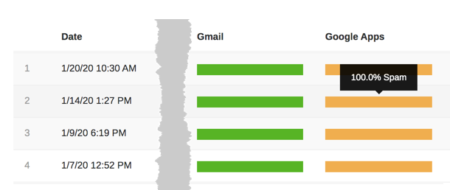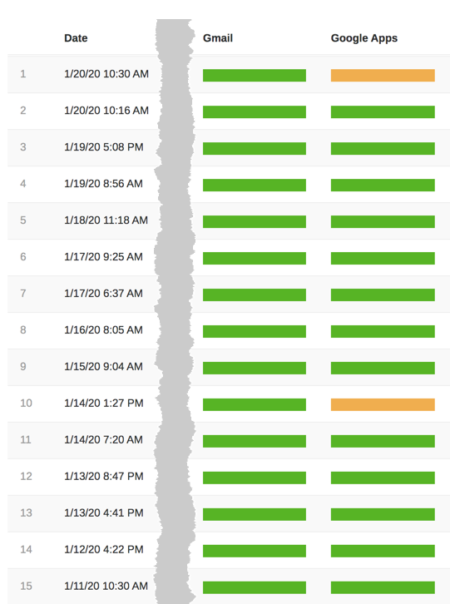Same MX, different filters
One of the things I do for clients is look at who is really handling mail for their subscribers. Steve’s written a nifty tool that does a MX lookup for a list of domains. Then I have a SQL script that takes the raw MX lookup and categorizes not by the domain or even the MX, but by the underlying mail filter.
Part of that script classifies domains hosted by Google apps as a separate filter from Gmail. Even though they’re actually all the same underlying system. I never had any real, definitive evidence that the filters were different. Just a lot of indirect evidence seeing mail delivered.
That changed today as I was checking delivery for a client. One of their mailstreams is getting 100% inboxing at Gmail, but 100% spam at Google Apps. That’s pretty clear evidence that Google Apps and Gmail are different filters.

I started looking at that mail in particular. Initially I noticed a feature of the subject line that looked like it may be something a business filter would trigger on. But, on looking deeper, there are other features that make it clear this is a different mail stream. What isn’t different is the From domain, the SPF domain or the DKIM signature.
In any case, this particular pattern makes it pretty clear that Google is specifically depositing this mail stream in the bulk folder of Google Apps users. Meanwhile the messages are going to the inbox at Gmail and all the other messages from this sender are going to the inbox at both places.

Google filters are specific and sensitive. They can identify different mail streams and target messages separately between Gmail and Google Apps.

